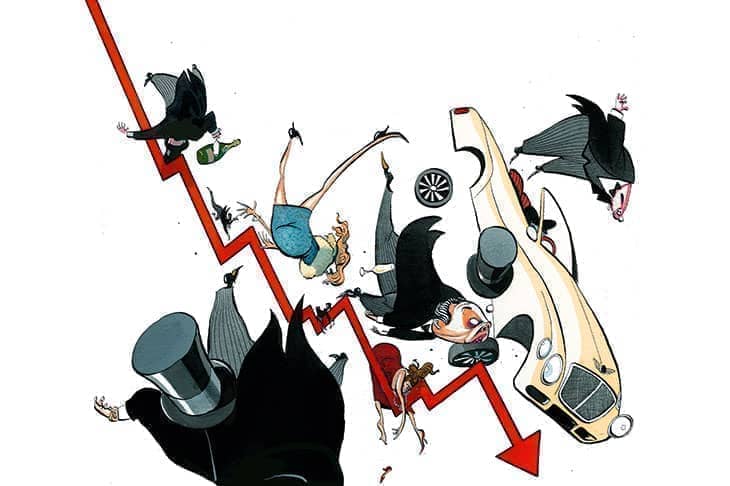There’s an almighty debate ongoing in the US about what exactly a ‘recession’ is. Treasury secretary Janet Yellen said the US economy is not shrinking, saying it is in a state of ‘transition’, not recession. But in a clip from 2000 being circulated on Twitter that is comically apt, Bill Clinton said ‘a recession is two quarters in a row of negative growth’.
Regardless of who’s right, the US is currently in Bill Clinton’s definition of a recession. Figures show that the economy shrank by 0.2 per cent in the second quarter of this year, following a 1.6 per cent fall in the first quarter. Over the year, the US economy is now 0.9 per cent smaller than it was a year ago. Remarkably, the news comes just a day after the Federal Reserve raised interest rates by 0.75 per cent – the second such rise in as many months.
It is more confirmation, as if any were needed, that we have moved into another economic era. For the past three decades it has been taken for granted that at the first sign of economic trouble central banks would rush to cut rates, in order to stimulate markets and consumer demand. The Fed has done it so often that it created an expectation that it would always rush in and prop up the market and the economy, even at the cost of provoking the economy, for example by creating asset bubbles. It was the so-called ‘Greenspan put’, and gave investors the confidence that government and its monetary infrastructure was on their side. No longer. We are back to the early 1980s, when inflation was the prime concern of central banks, and investors would just have to live with their decisions.
Does that mean that markets are in for a rough ride? Not necessarily. To stay in the early 1980s for a moment, the fight against inflation sparked off a long-running bull market which, with blips in 1987 and 1994, lasted pretty well until the end of the 20th century. Sound money itself turned out to be a great boon for stock markets.
On the other hand, how serious is the Fed, and other central banks, about fighting inflation? We are still a long, long way from the high interest rates which were employed to calm inflation in the early 1980s. Real interest rates remain deeply in negative territory. The Bank of England base rate is currently 1.25 per cent, and retiring rate-setter Michael Saunders recently suggested that it might have to be raised to 2 per cent next year. Yet the Consumer Prices Index (CPI) for inflation shows 9.4 per cent and the Retail Prices Index (RPI) 11.1 percent. The last time the RPI was this high was in January 1982. And the Bank of England base rate then? It was 14.3 per cent. Those are the kind of rates which brought inflation under control in the early 1980s, and no one can say for sure that we won’t need such a hammer blow again.
It is interesting that the US should be the first large western economy to have sustained shrinking – given that it seemed to be the first economy to lead the world out of the pandemic slump. Germany is almost certain to follow, and Britain, too once we have figures for the third quarter. I wouldn’t want to bet against the US once again leading the recovery when it happens.







Comments